The Fairphone 5 is Here: How Much Better Is It Than the Fairphone 4?
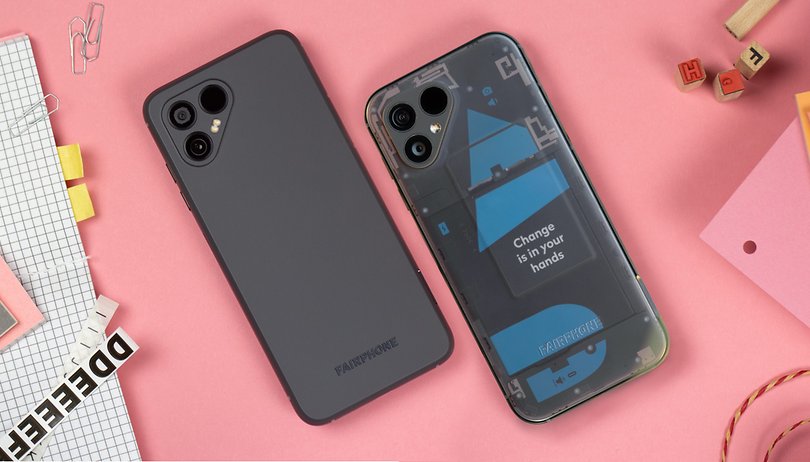

Read in other languages:
The new Fairphone 5 is here and—of course—claims to be the best smartphone in the series so far. We will find out whether that is true in this article. We compared the Fairphone 5 with its direct predecessor, the Fairphone 4. Technical specifications, software support, price—we take a closer look at everything in our comparison!
Fairphone continues to work on making the world a bit better with sustainable phones. This should work by using smartphones that can be used for as long as possible. Fairphone gives us a long-term promise in this regard: The Fairphone 5 gets a five-year warranty, and the company even promises us software support for eight years.
But are we dealing with a smartphone that you would at least theoretically want to use for eight years? We compare the technical specs, which should at least allow us to make an initial classification.
Fairphone 5 vs. Fairphone 4: Spec sheets face-to-face
| The new challenger | The predecessor | |
|---|---|---|
| Product | ||
| Image |  |

|
| MSRP | €699 | €579 |
| Display | 6.46" OLED | 6.3" LCD IPS |
| 2,770 x 1,224 px (459 PPI) | 2,340 x 1,080 px (425 PPI) | |
| 90 Hz refresh rate | 60 Hz refresh rate | |
| SoC | Qualcomm QCM6490 | Qualcomm Snapdragon 750G |
| RAM | 8 GB | 6 / 8 GB |
| Memory | 256 GB | 128 / 256 GB |
| Expandable memory | ✔️ | |
| OS | Android 13 Five years of Android updates Eight years of security updates |
Android 12 At least two years of Android updates At least four years of security updates |
| Camera | Main: 50 MP, f/1.88, OIS Ultra-wide-angle: 50 MP, f/2.2, 117° FoV |
Main: 48 MP, f/1.6, OIS Ultra-wide-angle : 48 MP, f/2.2, 120° FoV |
| Selfie camera | 50 MP, f/2.45 | 25 MP, f/2.2 |
| Battery | 4,200 mAh Wired charging: 30 W Replaceable battery |
3,905 mAh Wired charging: 20 W Replaceable battery |
| Connectivity | 5G / LTE / Wi-Fi 6E / Wi-Fi Direct / Bluetooth 5.2 / NFC | 5G / LTE / Wi-Fi 5 / Wi-Fi Direct / Bluetooth 5.1 / NFC |
| eSIM | ✔️ | |
| IP Certification | IP55 | IP54 |
| Colors | Matte black, sky blue, transparent edition. | Gray, Green, Speckled Green |
| Dimensions and weight | 161.60 x 75.83 9.6 mm | 212 g | 162.0 x 75.5 x 10.5 mm | 225 g |
| Evaluation |
|
|
| To the offer* |
|
|
Of course, we have already tested the Fairphone 4 in detail for you. The review of the Fairphone 5 is also in progress—so you can already look forward to Antoine's review. This comparison is based on the technical specifications but will be updated immediately once our review is complete.
Note that the Fairphone models are not directly available for sale in the US. The Fairphone 4 is available in both the US and Canada through Murena but their model comes with the /e/ distribution installed instead of the stock Android.
Table of contents:
- Display and design
- Performance and connectivity
- Cameras
- Software
- Battery and charging
- Price and availability
- Conclusion
Display and design
A lot has happened at Fairphone since the last model. The display of the Fairphone 5 has now grown to 6.46 inches and also has a higher resolution of 2,770 x 1,224 px than the predecessor. Images are refreshed at up to 90 Hz and, most importantly, Fairphone has opted for a new display technology: Instead of LCD (IPS) in the Fairphone 4, the Dutch company now relies on OLED technology.
Despite the increase in screen diagonal, the Fairphone 5 has even turned out a bit more compact and is 12 g lighter than the last model. Of course, this manufacturer is not only about numbers but above all about sustainability. Therefore, it should also be emphasized that a lot has changed in terms of material and design. You can now replace ten modules instead of 8 before, and yet the IP rating even went up slightly from IP54 to IP55.
Speaking of sustainability, 70 percent of the materials are recycled or fairly sourced. The company still mentioned a value of 30-40 percent for the Fairphone 4. The Fairphone 4 already had a five-year warranty on the device, whereas you have to live with a two-year warranty in most other brands. Logically, the 5-year warranty is also maintained for the Fairphone 5.
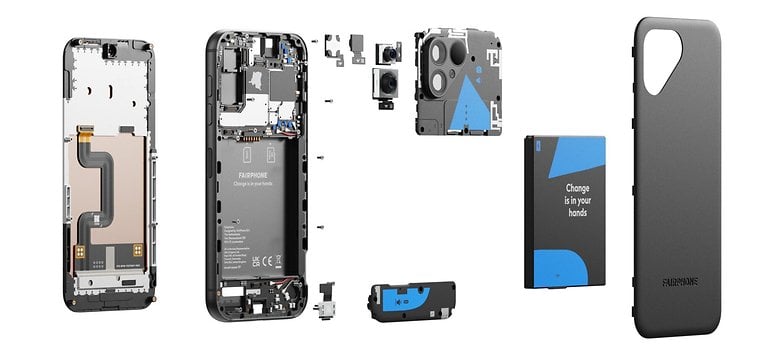
I already mentioned the modular design above: Ten modules can now be exchanged. This includes the cameras on the back, the battery, but also the display, and a lot more. You will be able to buy a replacement battery for just under 40 Euros, and a replacement display for just under 100 Euros.
Performance and connectivity
Just like the Fairphone 4, the Fairphone 5 relies on the quality of Qualcomm semiconductors. The Snapdragon 750G was used in the fourth generation, and it will be the Qualcomm QCM6490 in the new phone. This is an SoC that is actually more intended for use in the industrial sector, and it should perform roughly on par with the Snapdragon 778G in terms of performance.
- Read more: These are the mid-range SoCs for 2023
However, the chipset has a special feature: Qualcomm grants longer warranties for the QCM6490, so the Fairphone can expect software support until at least 2028. However, Fairphone plans support until at least 2031, which would then even correspond to eight years of support—a novelty in the Android ecosystem. We will discuss how the performance presents itself after we have finally tested the device.
The Fairphone 5 also benefits from the new SoC in terms of connectivity: Wi-Fi 6E and Bluetooth 5.2 5G are supported, and it keeps eSIM support for dual SIM connectivity.
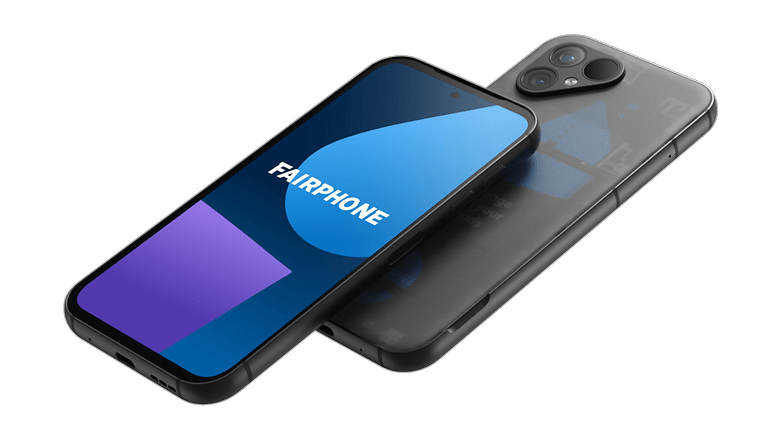
Cameras
At first glance, we see that it remains with two cameras on the back. The main camera and the ultra-wide-angle camera in the Fairphone 4 offer us 48 MP, which has now been slightly increased to 50 MP for the Fairphone 5. There is again optical image stabilization for the main camera, which is the IMX800 image sensor from Sony.
Together with the improved AI capabilities of the Fairphone 5, we can therefore cautiously hope that the camera performance will be significantly better than the still rather average performance of the Fairphone 4.
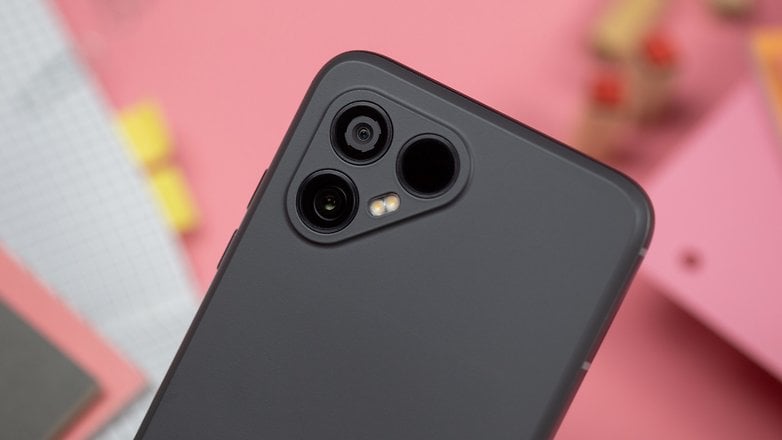
Incidentally, the Fairphone 5 now also offers a whopping 50 MP at the front, compared to the 25 MP in the predecessor. Fairphone also does away with the drop notch and presents the selfie shooter in a punch-hole design. Yes, all this does not say much about the sensor qualities so far. But Antoine will certainly shed a lot of light on that with his camera test in his review.
Software
Samsung, there's a new sheriff in town! Until now, it was always Samsung that we presented as the role model when it came to optimal software support in the Android camp. However, Fairphone is now ready to step it up a notch: The sustainability-conscious manufacturer promises us eight years of software support. Samsung also surpasses the five years of Android updates. Hats off, Fairphone—no other Android manufacturer can top that, and even the Fairphone 4 cannot keep up by far.
Of course, the test will have to show how the software presents itself. But Fairphone promises us a stock Android installation without any bloatware in advance. Sounds almost too good to be true, doesn't it?
Battery and charging
Does sustainability actually have drawbacks as well? Possibly—on the Fairphone page we read, "We don't supply USB cables, chargers, and audio jack adapters because you probably already have them. Why not just use what you already own? It works perfectly and saves waste."
For those who have a decent and reasonably up-to-date charger in the house, neither the lack of the USB cable nor the charger should really matter. Those who used the Fairphone 4 already know the procedure and the motivation behind it.
Perhaps more exciting is how the battery has developed since the last model. The capacity has now increased from 3,900 mAh to 4,200 mAh, and the battery now charges at up to 30 watts instead of 20 watts. Of course, that is not chart topping, but Samsung is not faster in this price range.
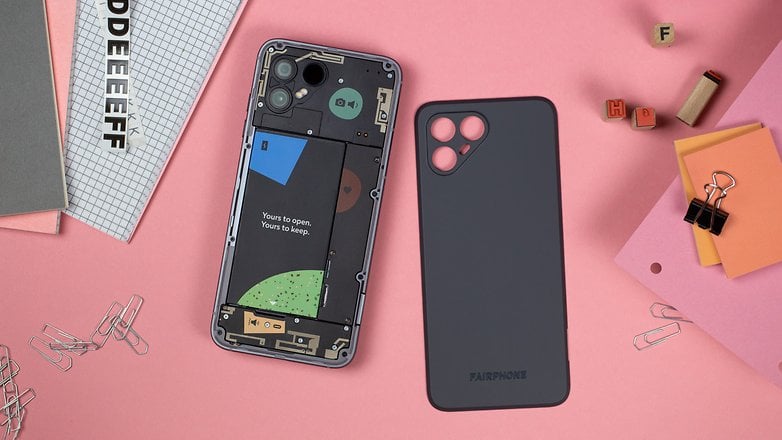
However, Fairphone naturally wants to score with other values in the battery as well. According to its own statement, the battery in the Fairphone 5 is the fairest in the world and contains fair lithium and fair trade gold. The cobalt used also contributes to improving the working conditions of the miners. The workers who make the batteries are also helped to live better lives by committing to living wages.
So if you might be a little grumpy because the battery doesn't charge as quickly as it does in some Chinese smartphones, perhaps you'll be soothed by the knowledge that you not only have a great smartphone but also one that doesn't harm the environment or the people involved in its production.
Price and availability
Now let's get to the unsavory part. I don't even mean Fairphone specifically, because in these times of high inflation we usually have to talk about increased model prices at this point. And yes, even in this case you are leafing more on the table of the house. While you could buy the Fairphone 4 starting at 579 Euros, you will now have to pay at least 699 Euros.
120 Euros sounds a lot, of course, but we have to classify that a bit: For 579 Euros, the Fairphone is available with 6 GB RAM and 128 GB storage. This version is not available for the Fairphone 5. There is only a variant with 8 GB RAM and 256 GB storage. As mentioned, it costs 699 Euros, but the comparable version of the Fairphone 4 is only 50 Euros cheaper at 649 Euros.
So, for these 50 Euros extra, you get a ... Oh no, we'll discuss that in the conclusion below. But let me briefly tell you when you can buy it. Pre-ordering is now possible in the Fairphone store, but you will have to wait a few weeks for delivery. If you order the device in matte black or in the Transparent Edition, it will be shipped on September 15. Fairphone will start shipping the sky blue edition on September 29.
Conclusion
I'll briefly remind you again that this conclusion is only based on the data that presents itself to us on paper. Battery life, performance, camera quality—we will only evaluate all that in the update to this article. However, we can already claim that Fairphone has managed a really significant improvement with the Fairphone 5.
Compared with the 8 GB model of the Fairphone 4 released in 2021, the Fairphone 5 is only 50 Euros more expensive. A price increase that could easily be justified by inflation alone.
But Fairphone offers much more than at the end of 2021: The display has a higher resolution, is bigger, and relies on OLED technology. The cameras should prove that the sensors make a difference in the test, and the same applies to the new processor. In addition, the battery grows, which can also be charged faster than before. Wi-Fi 6E, Bluetooth 5.2—the newcomer also outperforms the 2021 model here. Practically every hardware component beats the equivalent in the predecessor—that is what a smartphone successor should look like.
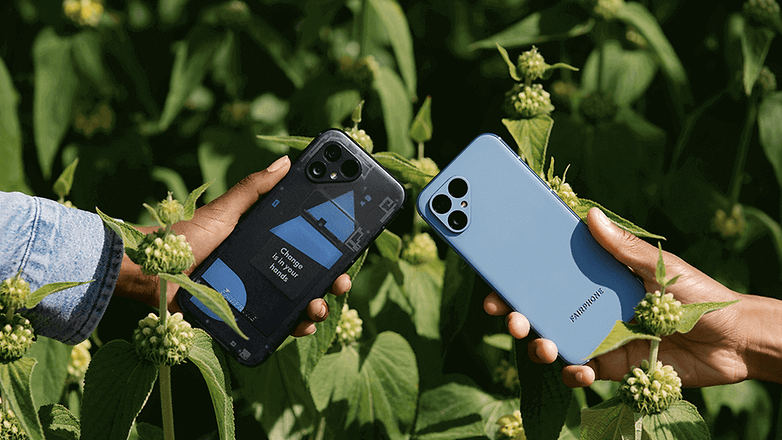
Above all, however, Fairphone scores in its core competence, sustainability. The Dutch are even aiming for support until 2031, and even consider 2033 feasible. What that means for you as a user is that you will get Android updates for five years and security updates for eight years. That is the new Android benchmark as of now.
We also care about significantly more recycled and recyclable as well as fair-trade components. Instead of eight modules, even ten can now be replaced in the new Fairphone 5. This means that neither an increasingly bad battery nor a "spider app" will keep you from continuing to use the smartphone. Honestly? At least on paper, there is no longer any argument to buy a Fairphone 4 instead of a Fairphone 5.
What do you think of the device and the Fairphone strategy in general? Do you also think that the company rightly carries the "Fair" in its name? And can you imagine using such a Fairphone in the future instead of the usual suspects from China, South Korea, or Cupertino?
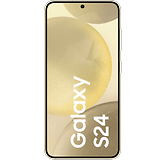





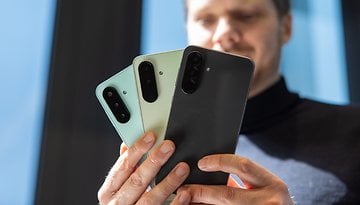









I have e-sim in my fairphone4
-
Admin
-
Staff
Sep 4, 2023 Link to commentOops, fixed.